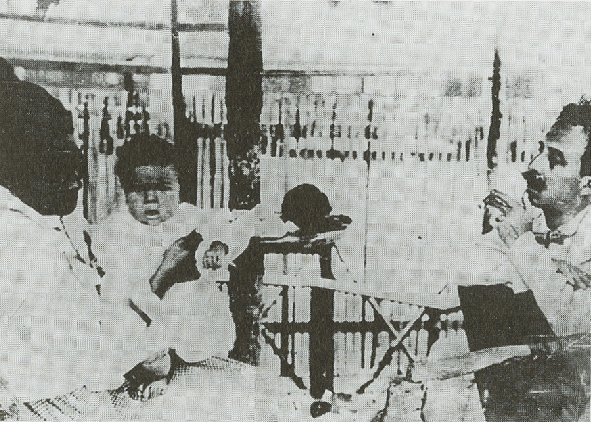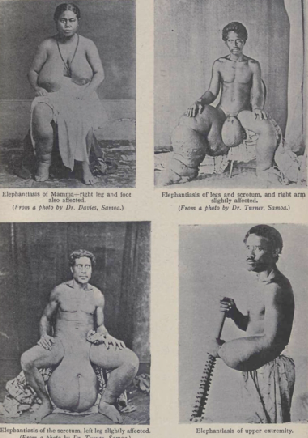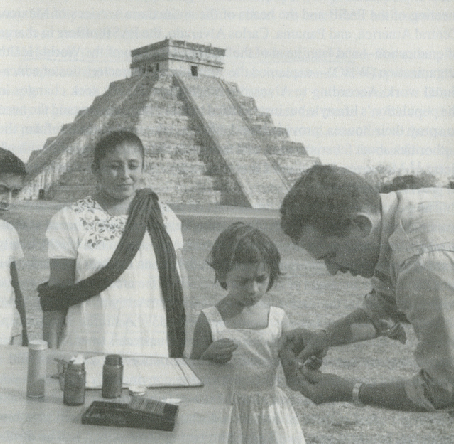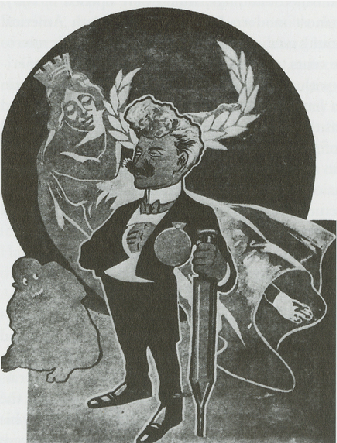The year is 1860. A Brazilian woman, a slave on a sugar plantation, begins to sicken with what we now call Chagas's disease. Despite being given whatever succor was available for one of her status, she weakens, looses her mental acuity, and is eventually deformed to a point of paralysis. Her demise is attributed to tropical degeneration, the generic explanation for various severe illnesses that seem to strike only those who visit or live in the tropics. Leading European scientists considered cases such as this (which were also common in their imperial holdings in South Asia and Africa) to be evidence that there were fundamental differences between the regions of the world that not only increase the likelihood of physical degeneration, but affected mental and moral capacities as well. Tropical medicine became the standard term denoting the treatment and classification of those ailments considered unique to hot and humid areas. Yet the phrase itself had imperialistic and pejorative connotations reflecting the assumption that tropical environments were doomed to lag behind regions of the world deemed by their own occupants to be more civilized. Historians and public health doctors have questioned whether the plagues associated with the tropics stemmed primarily from their climatic conditions or from the prevailing social organization in those places.
Nevertheless, as Nancy Leys Stepan noted, the tropical countries of Latin America (unlike those in Asia and Africa) were politically independent by the early nineteenth century and thus free to pursue their own styles in science and medicine. To be sure, researchers in Latin America faced many obstacles, including being ignored by the world's scientific centers because they were deemed unfit to conduct advanced science, according to the same racist logic that assumed the inferiority for human habitation of tropical climates, as compared with temperate ones. In the minds of many contemporary Europeans, the dual curse of living in the tropics and not being white was simply not conducive to conducting sophisticated science (Stepan 1998).
Until recently, tropical medicine was considered to be the domain of both imperial powers that sought to protect those their settlers and administrators in tropical regions or of various philanthropic organizations, especially the Rockefeller Foundation and the Pan American Health Organization, which tried to eradicate diseases that threatened U.S. interests. Yet as early as the 1860s, researchers in Latin America began to study the diseases endemic to their region, creating centers of excellence that argued against the racism inherent in environmental determinism. The historian Julyan G. Peard pointed to Brazilian scientists who promoted the novel idea that backwards social conditions (especially the institution of slavery) created an environment in which parasites and other pathogens could thrive. By blaming tropical diseases on microbes and poverty, these researchers tried to exculpate the tropical climate itself as the cause of tropical diseases (Peard 2000).
An emphasis on sanitary and preventative measures to combat disease continued in Latin America throughout the early twentieth century, especially in Brazil where Oswaldo Cruz and Carlos Chagas established an important center for tropical disease research. Nevertheless, attempts to eradicate major diseases like malaria and yellow fever failed, and infectious diseases continue to plague the impoverished tropics to this day. One priority of public health advocates, very difficult ot achieve, has been raising overal standards of living in order to ensure that poor citizens had clean water free from infections carried by insect vectors. Only after World War II would Latin American countries, especially Mexico, promote eradication of vectors and testing of the population to ensure that supposedly tropical conditions like yellow fever were made a thing of the past.
Despite such Latin American efforts, powerful nations continued to use environmental determinism to legitimize their right to dominate the tropics, including the U.S. Panama Canal Zone, and pour scorn on its inhabitants as racially inferior. Treatment and eradication of diseases that plague the topics still pose substantial challenges. Illnesses once considered to be "defeated," like cholera, have returned to Latin America; despite known cures and preventative measures, malaria remains one of the greatest killers on earth.
Questions for further exploration:
- Look at the one of the efforts by Latin American researchers to conquer a tropical disease (yellow fever, Chagas' disease, Carrion's disease, etc.). To what extent did they succeed? And how do you define "success" in their case?
- Compare the U.S. centered approach to tropical medicine seen in the video "Silent War" with how scientists in Latin America conceived of the subject. How were their emphases similar or different? How were "tropical" races (blacks, Indians, mestizos) understood by different groups of scientists? How did each approach the prevention and cure of tropical diseases?
- Considering the contemporaneous eugenics movement in the early twentieth century, how did the differing approaches of European and Latin American scientists reflect each region's prevalent eugenic theories? See the "Eugenics" topic for more on that movement.
- Look closely at the images in this topic. What messages are implicit in the images of people infected with tropical diseases? What messages are implicit in the images of doctors and scientific experts? And how do these fit in with the prevalent notions about tropical medicine during this period?
- Despite being the Latin American country with the youngest tradition of universities and nationally motivated science, Brazil led the way in Latin American tropical medicine research, first in the work of the Escola Tropicalista Bahiana and later the Instituto Oswaldo Cruz. What factors unique to Brazil made research in tropical medicine so important and successful in this country?
Further Reading:
Coutinho, Marilia. "Ninety Years of Chagas Disease: A Success Story at the Periphery." Social Studies of Science. 29: 4 (August 1999): 519-549.
Cueto, Marcos. Cold War, Deadly Fevers: Malaria Eradication in Mexico, 1955-1975. Baltimore: Johns Hopkins University Press, 2007.
---. "Sanitation From Above: Yellow Fever and Foreign Intervention in Peru, 1919-1922." The Hispanic American Historical Review. 72: 1 (February 1992): 1-22.
Peard, Julyan G. Race, Place, and Medicine: The Idea of the Tropics in Nineteenth-Century Brazil. Durham, NC: Duke University Press, 2000.
---. "Tropical Disorders and the Forging of a Brazilian Medical Identity, 1860-1890." The Hispanic American Historical Review. 77: 1 (February 1977): 1-44.
Stepan, Nancy Leys. Beginnings of Brazilian Science: Oswaldo Cruz, Medical Research and Policy, 1890-1920. Sagamore Beach, MA: Watson Publishing International, 1981.
---. Picturing Tropical Nature. Ithaca: Cornell University Pres, 2001.
---. "Tropical Medicine and Public Health in Latin America." Medical History. 42 (1998): 104-112.







